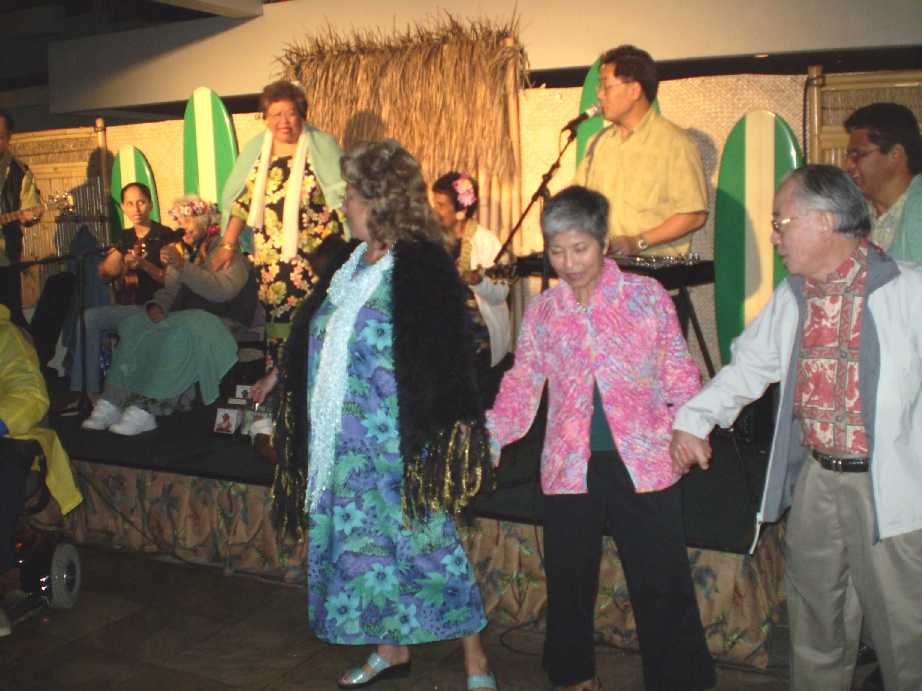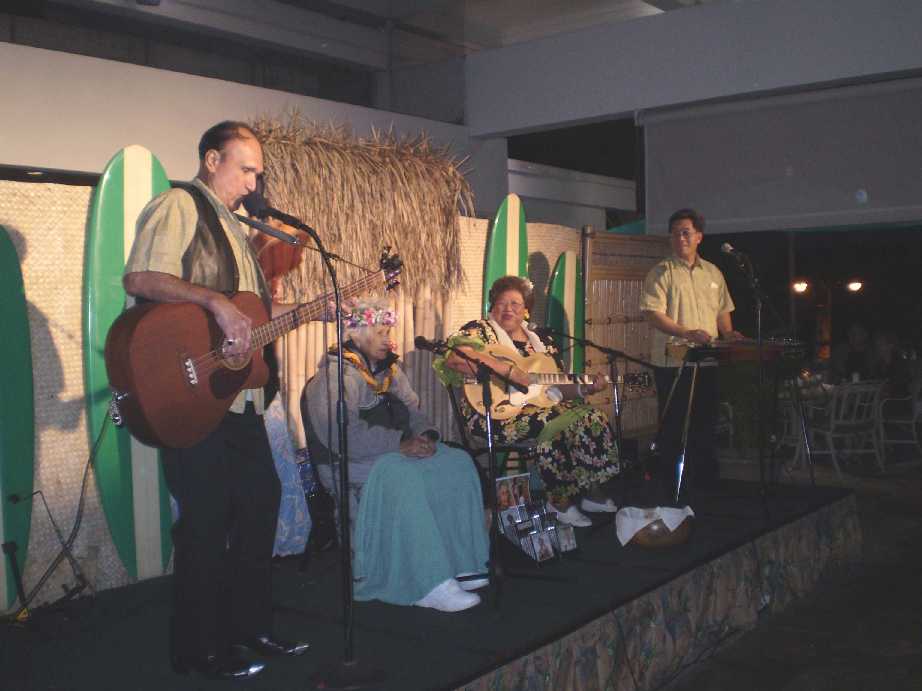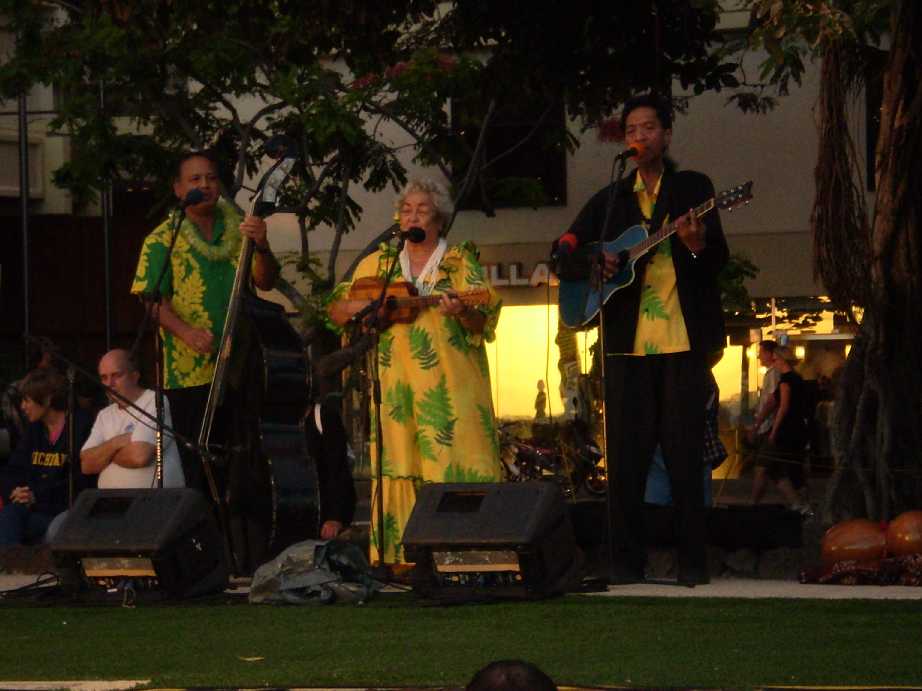About SteelC6th.com
Steel Guitar
Webpage of David J. Stewart

Home | C6th Tabs | Steel Guitar Forum | Tunings | Brad's Page | HSGA | Rhythm Tracks | Jerry Byrd | Steel Guitar Videos | Song Tabs | How to Go to Heaven
About SteelC6th.com
Steel Guitar Webpage of David J. Stewart
Home | C6th Tabs | Steel Guitar Forum | Tunings | Brad's Page | HSGA | Rhythm Tracks | Jerry Byrd | Steel Guitar Videos | Song Tabs | How to Go to Heaven
Welcome everyone! Music is a gift from God and the most beautiful music in the world is Steel Guitar in my humble opinion. I love learning, playing and teaching steel guitar. That's the purpose of this website. I have been playing pedal steel since 1992 and lapsteel since 2006. I started picking standard 6-string guitar at age 15. I then learned some banjo (Cripple Creek is my favorite song), some harmonica, saxophone, tipple, zither, keyboard, and others. I love all musical instruments, especially stringed instruments. But when I fell in love with steel guitar, it became a passion. God put that desire in my heart. I gave up the saxophone many years ago. I only had an interest long enough to learn how to play it, then realized it wasn't for me. I only play stringed instruments today. My heart's passion is and always will be steel guitar.
I love teaching, performing and sharing. I made this website for everyone, particularly for the amateur musician who sincerely desires to learn to play Hawaiian music on the lap steel. It's a great instrument.
A note about my personal health problems: I have suffered much in tremendous physical pain, beginning in 2004, and becoming much worse after neck surgery in 2009 and my second neck surgery in April of 2010. The second surgery made me much worse, giving me peripheral neuropathy in addition to my original problem of neck pain and tension. I have Cervical Degenerative Disk Disease (which is basically a deterioration of the neck). My spinal cord is damaged, which causes persistent tingling, puffiness, burning and razorblade-like pain in both arms and legs (especially on the right side). My right leg and arm feel half asleep 24/7.
I have neck stiffness 24/7 and toothache-like pain in my neck that never goes away. It is debilitating. As of 2013 doctors have identified four potential problems that I still have in my neck, including a slightly pinched spinal cord, bone spurs and stenosis (narrowing of the spinal cord canal); but I have been advised by a surgeon, my doctor and a neurologist to leave it alone since my second surgery left me worse than before.
So as you can imagine, playing music isn't as fun for me as I wish it were much of the time. Still, I make the best of it. I am grateful to God that I am still able to play at all. Few people understand what I'm going through, understandably. Thankfully, the medications I am taking do help and offer some relief. I take 120 mg. daily of Oxycontin for neck pain, plus Lyrica, Ambien and Oxycodone to cope. God is good! I am sharing this information with my web visitors to briefly explain why I have no e-mail contact. It's just too much for me to keep up with.
It has been very rewarding to see the happiness that the steel guitar brings to many people. That is my greatest reward—making others happy in this painful world. Life is not about waiting for the storm to pass, it's learning to sing in the rain. Some people only take up learning to play a musical instrument to make money, be popular or impress their friends, but I play to share my heart with others. Music is the universal language. I love when people come up and say, “I always wondered what instrument made that sound.” I have met some very interesting people from playing steel guitar. I love sharing my music and the steel guitar with others. It is truly a blessing from God. There is no music in the world like the beautiful steel guitar.
If you think that perhaps you'd like to play the steel guitar, then this website is for you. Nothing is difficult once you get the hang of it. The hardest part is getting started. There are millions-upon-millions of guitar and piano players, but steel guitarists are a rare find. It's a shame that young people aren't introduced to the lap steel at an early age. There are no frets on the steel guitar, only fret markings. So that makes it very easy to change from one key to the next; whereas it requires completely different finger positions on piano and guitar (unless you use a capo).
My point is that steel guitar is a simple instrument to play in my humble opinion, albeit somewhat challenging for the beginner. It is certainly a difficult instrument to master. The hardest part is staying with the instrument long enough to be rewarded for not giving up. Most students never get past learning to use the picks and learning the different picking groups of strings together (like strings 1, 2, 4 and 5 on the C6th, which is a Major chord. And also string 6 if tuned to C. You can pick these strings in different combinations). Here are all the chords for the C6th lap steel, which is all you need for Hawaiian music (and other styles too). This is the most difficult part, that is, learning to pick the different string groups accurately.
Kids like ukulele because it doesn't require any picks or picking patterns. You just strum. Ukulele is a much simpler instrument to play than steel guitar (and cheaper), and far more common in the islands as well. In fact, ukulele is the official State instrument of Hawaii. But people don't think of Hawaii when they hear a ukulele, they think of the islands in general (anywhere near the equator). However, when people hear the steel guitar they instantly think of Hawaii, land of Aloha.
A Little About My Visits To Hawaii
The steel guitar is not about Hawaii, it's about God's goodness anywhere in the world. 1st Corinthians 10:26 teaches that the earth is the Lord's and the fulness thereof. Music comes from the heart. I've been to Oahu, Hawaii, and when I saw hundreds of homeless people in Honolulu sitting and laying all along North King Street and Beretania Street, I pondered over the striking contrast between Waikiki Beach where millions of wealthy tourists visit every year, and all the homeless people I saw on the streets. That was in 2008. I had a rent car so I went where the tour buses don't take people.
I stopped by the Diner's Drive-in in a local Honolulu neighborhood and bought a great cheeseburger. The food was inexpensive and good quality. However, I stopped by Costco grocery store up near North Shore (where the surfers all live) and saw a half-pound of bacon for $8. Milk was $9 a gallon. I stayed at the Pagoda Hotel, close to Wal-Mart (which is packed full on Oahu because of their lower prices). You've only got the very wealthy and the very poor on Oahu living alone. The only way middle-class people survive is by sharing everything. They rent together as an extended family—brothers and sisters, aunts and uncles, nieces and nephews—to survive. People with college degrees can't find work in Oahu, because competition is fierce. I saw hundreds of people literally living on the ocean shore up by Walanae and Maili.
I stayed at the Queen Kapiolani Hotel in Honolulu at Waikiki Beach in 2011 when I visited in February and again in May. It's right across from the Honolulu zoo. Although I relatively small zoo, I enjoyed visiting the zoo. They do have a nice exhibit. The peacock was my favorite, with all the beautiful colors. A hot dog was $8. Gotta help keep those animals fed.
Many people are willing to work for half the salary just to live in Hawaii (paradise so-called), so a white collar worker starts out making around $25,000 a year (and that's if you speak English and Japanese and have other skills). Personally, I think Oahu is highly overrated these days. It's too commercialized. You've got busloads of tourists being dropped off at Waikiki Beach, ready for an experience. Heck, I could play my steel guitar on the sidewalk, set out a can, and make lots of money, but I'd probably get mugged in Honolulu. And besides, you need a license from the city of Honolulu to perform any type of entertainment along Waikiki. I'm not exactly sure of the rules. I just know from talking with other musicians that you need a permit.
I saw a guy playing an old Rickenbacker lap steel, just like the Model NS to the left. The zoo is right down the street from Waikiki Beach, which is where I parked for a couple dollars in quarters. I wish I had known that the night before, because I paid $38 to park at one of the hotels for just 3-hours!!! Park at the zoo if you ever visit!
The best motivation to play steel guitar is to hear others playing steel guitar. That's why I have several hundred songs on this website, so that you can listen to and learn. The human mind is incredibly brilliant the way God made it to work. If you hear steel guitar, it will program your mind on what to play. I've learned that the music itself guides the musician what to play. You just need to learn your scales and chords, and then you can create your own musical arrangements. So I encourage you to listen to lots of pretty Hawaiian steel guitar (or whatever your musical preference).
I took the following pictures in January of 2008 at the Moana Terrace in the Marriott Hotel across the street from Waikiki Beach in Honolulu. Steel guitar virtuoso, Alan Akaka is playing the steel guitar, whom I had the privilege to meet; and also the legendary Genoa Keawe (2nd lady from left with the flower lei on her head). She made famous the vocal technique so prevalent in Hawaiian music today. You can hear the inflection of Genoa's voice in this song clip, Susie Ana E.

You can read more about the musical group's members here. Alan Akaka is playing a CANOPUS steel guitar made in Japan. He plays a hollow body, but you can buy a CANOPUS either solid or hollow.

Genoa Keawe passed away just weeks after I took this photo. I was glad I got to meet her in person.
The Best Way To Learn To Play Steel Guitar
The best source of musical instruction is the music itself. Listen carefully to how the music is expressed. Jerry Byrd (1920-2005) made extensive use of the volume pedal, as a means of expression. The way to use a volume pedal is to back way off the volume and then raise the volume just milliseconds after picking a string or chord (more than one string). It's one of those things that will happen naturally as you progress in your skills. By coming into a chord with the use of a volume pedal, you eliminate the sound of the strings being picked, which gives the chord a completely different sound that is often desirable. The volume knob can also be used, if it is positioned in a convenient location (often it's not) for your pinky finger to reach. Guitars are like cars, that is, they all perform the same basic function, but each has its own feel.
The key to using a volume pedal (or knob) is not to raise the volume pedal until AFTER the string(s) are picked. This technique explains one reason why Jerry Byrd's music sounded so good. It's all technique. Jerry Byrd is known as the Master of Touch and Tone, and he sure was, but the reason is because he mastered TECHNIQUE (i.e., being skillful in the practice of fundamentals). There is no magic involved in playing the steel guitar—it is all a matter of learning proper techniques and diligently working at them until you get it right every time. It's just as challenging to learn for the next person as it is for you.
Although intelligence plays a definite role in one's musical development, I believe diligence and hard work and determination are the main requirements. As Jerry Byrd used to say, “All the talent in the world means nothing if you don't have desire!”
It's also important to develop an ear for music, making use of diminished and augmented chords which so many amateur musicians avoid. Jerry Byrd and Barney Isaacs made use of chords which most steel players avoid. Few musicians modulate their music from one key to another, but modulating makes music more interesting. I've learned a nifty little trick (or rule of thumb) on the C6th tuning whenever modulating. You need to have the 6th string (lowest) tuned to a C# (which I use some of the time. Lately I've just been using a C note on the bottom string, so I can strum a full C6th chord across the neck). Jerry Byrd liked the C# very much on the low string. It gives you a nice 7th chord (picking strings 10, 9, 8 and 7), or a diminished chord (picking strings 10, 9 and 8). Here's a rule: Whatever key you're modulating into, play a 7th chord by picking strings 10, 9, 8 and 7 two fret markings before the key you're modulating into. So if for example I'm playing in the key of F on the 5th fret; but now I'm going to modulate up to the key of Ab on the 8th fret, I'll strum strings 10, 9, 8 and 7 on the 6th fret (i.e., an Eb7th chord). It works every time.
When I hear the steel guitar, I can't wait to play my own steel guitar, to try to play what I've heard that I liked. If you get into a slump, listen to steel guitar albums (or go see some live performances) and you'll be motivated and inspired. I always am. There's always something going on somewhere with steel guitar. If nothing else, you've got tons of great songs on YouTube to play along with at home (which is what I mostly do because of my neck injury).
This website is intended to be fun, uplifting, educational, and helpful in as many ways as possible to fellow steel guitar players, especially to newcomers; and to a lesser degree to provide wonderful music to whoever loves Hawaiian music. You won't find another website like this, it is unique. My main purpose is to encourage people to take up steel guitar. It's so easy to play if you have the desire to stick with it. You can take a lap steel with you anywhere. You can play it in your car with a small HONEYTONE by Danelectro (pictured to the left). You can search for the amp at either Guitar Center or Musician's Friend. These are great little amps for practice. They also clip on your belt, so you can walk around with it. The amp uses one 9 volt battery. Don't expect any tone though. For tone you need something with a bigger speaker. As a general rule, the bigger the speaker the better your tone will be, but sometimes a smaller speaker is desired for Hawaiian music. In the old days that's all they had, such as the Volutone Amp.
My heart's desire is to teach steel guitar, but it's difficult to find students who are interested. Ukulele is the official state instrument in Hawaii, go figure. The very place in this world where Hawaiian steel guitar had its origin treats steel guitar as an outcast. Steel guitar is more popular in Canada and Europe than it is in Hawaii today. Other than at a few key places around Waikiki, Honolulu, the steel guitar is not as popular as you'd think in Hawaii. The kids listen to all the same garbage that kids listen to in the mainland. Steel guitar is played for the tourists, but the locals have different tastes in music.
Spend the Money for a Great Quality Steel Guitar
You can't make someone like Hawaiian steel guitar. You've either been bitten by the steel guitar bug or you haven't. I receive a lot of compliments when I play steel publicly, and many people ask how much my steel guitar costs. I don't know why, but people always ask how much I paid for it. When I first started playing lap steel, I didn't know any better and brought my $79 Artisan lap steel to the beach (it is a piece of junk, but I was able to draw crowds with it because I knew how to play it). I repainted mine with antique white, and one man asked if it cost $1,100. When I told him $79 bucks (which includes the legs and gig bag), he couldn't believe it, because the music sounded so good to him. Now, years later, I take either my Post War 1953 Rickenbacher or my Canopus to the beach. I have other guitars, but these are my favorites at this time. I never wanted a bunch of guitars, but ended up with quite a few, simply because I was searching for my sound. Everyone has their own preferences. How can you learn what your preferences are if you don't try a bunch of different guitars? So, I wasn't trying to become a collector, I just wanted to find the guitar for me. I really recommend spending a lot of money if you are serious about playing the steel guitar, because it is very true that you get what you pay for.
The average person doesn't know what good tone is, bless their heart, so it all sounds good to them. Only a fellow musician would notice a bad tone, missed chord, cheap guitar, et cetera. I'll take a Rickenbacher Bakelite any day; but I like to play and record with a $99 steel guitar once in awhile to show others what can be done with even an inexpensive piece of junk from China. A great steel guitar player is going to sound good on any guitar they play; and a bad steel guitar player won't sound good on the best guitar in existence. A lot of steel players try to cover their bad playing with guitar processor effects, and it works to some extent; but what's the use of playing if you don't get heard?

A live band that I watched at Waikiki Beach, Honolulu. They need a steel guitar player badly.
The lap steel pictured to the left is called a Silver Hawaiian. I have a 1937 with a missing tone knob. So I got it at discount. It's actually all chrome, and quite a conversation piece. The metal gets hot in the hot sun though. It has either emery cloth or like mine, old newspapers from the 1930's shoved inside to better it's tone. Mine has the 1 1/2" horseshoe pickup. This steel guitar sounds metallic, naturally, so the stuffing deadens the tone a bit. For tone, stay away from this puppy. But for looks, it doesn't get any better. It doesn't sound bad, it's just not a Bakelite (which is actually bowling-ball material). Bakelite chips very easily if dropped, which is why there are hundreds of chipped Rickenbachers floating around today. Still, you cannot beat the sweet sound of a Bakelite Ricky. In my opinion, there is no tone difference between the 1 1/4" verses 1 1/2" pickup width. I have both and I can't tell any difference.
I always draw a crowd when I play publicly at the beach or park. There's just something about a steel guitar. I encourage you to play your music publicly, not just at home in your living room. People love to hear live music. Just learn about 10 songs, and get good at them, then you're good to go! There are nursing homes, schools, restaurants, churches, all sorts of places to perform. I have a SONY water-resistant, battery-powered, boom box that I play my rhythm track CD's in. I also have a battery-powered Roland MicroCube amp, with a 4-inch speaker, which is a very nice little amplifier for about $125. You can share your steel guitar performances anywhere.
In these dark and sinful times, people need to hear something beautiful. I was setting up my equipment at the beach on a beautiful sunny day, getting ready to play. It took me about 10-minutes to get setup and then tune my steel to D9th (which is just dropping the 4th string on your C6th from G to F#). I then began to play Moon of Manakoora. It's so dreamy! A woman came over and said, “I was so afraid you were going to play some horrible kind of music, but your music is so pretty.” That made my day!
Anyone can turn on a boom box and play heathen garbage... push it, shove it, do me, do me, do me! I'd like to shove their radio where the sun don't shine, let me tell you! Young people today are extremely impressionable and are going to emulate the music set before them. It is sad that our culture is controlled today by the evil corporations. The TV dictates what people wear, eat, think, watch, hear, and everything else. People are like brainwashed robots!
I visited the Pearl Harbor Memorial and took this photo inside the information building.
My musical preferences are Hawaiian and some of the older Country songs, like Lord I Hope This Day is Good by Don Williams. I pretty much only listen to steel guitar instrumentals these days. When I hear a Country song, all I listen for is the steel guitar anyway, so I might as well just listen to steel guitar instrumentals. People don't know what they're missing.
I don't care for Rockabilly, nor really fast picking; I love pretty music. Of course, you need to have a blend of music, because people get bored if you just play slow music. So I do play a few medium-tempo songs, like Lovely Hula Hands, Sophisticated Hula and Steel Guitar Rag. But most of the songs I play are nice and slow and pretty. Those are the songs that pull on the heart strings.
I've heard some steel players say it's just as hard to play pretty as it is to play fast. I don't think so. Playing fast requires MUCH effort and time. Playing pretty mostly requires your heart. At one time I was able to play faster, but due to spinal cord problems in my neck I am limited. I can pick fast, but as I do the intensity of the razorblade-like pain in my right arms increases (my picking arm). I am thankful to God that I am able to still play music. Psalm 144:9, “I will sing a new song unto thee, O God: upon a psaltery and an instrument of ten strings will I sing praises unto thee.” Most pedal steel guitars have 10-string necks. Just as a harp, the E9th tuning provides the musician with a complete chromatic scale.
A great help to learn to play steel guitar is to listen to the instrument being played so you can become familiar with the sounds. I have provided numerous free tabs on this website to help you learn what to play; but technique is not easy to teach. A picture is worth a thousand words they say. This is why I have provided many videos of other steel players, including myself, so you can watch and learn. Vibrato, muting and harmonics are all techniques. They just take some practice, but are very rewarding once you learn them. It's like riding a bike, i.e., once you get the hang of it you never forget.

Here's some beautiful wild flowers I photographed on the west side of Oahu, up near Walanae.
I welcome everyone and hope you'll enjoy listening to the music; or better yet, learn to play the steel guitar. It's a dying art today. The lap steel is such a brilliantly inventive, simple and beautiful instrument. Music is truly a gift from God. It's absolutely amazing what just 6-strings, with no frets (only fret markers) can do! With all the different steel guitar tunings and techniques, the possibilities are enormous.
Most people that purchase lap steels today have no idea what to play and are using them more in the style of bottleneck guitar playing. This is why I made this website, to rescue new players who don't know what to play. If you'll learn the scales, chords, and some of the song tabs on my website; then you'll be able to play anything and know what you are doing chord wise. That's important. I can play C6th by ear, i.e., I know my scales well enough so that I can jump in on any song and play along.
A Word On Guitar Effects and Amps
I am a firm believer in using as few effects as possible, except in desirable situations where you want to obtain a specific sound (like using a little bit of chorus effect on pedal steel, which is commonly used to back-up a singer). The only effect I use for Hawaiian steel guitar is reverb. I set my reverb to about 3 or 4 most of the time, but to about 7 or 8 on dreamy songs like Moon of Manakoora or Bali Hai where I want to sound like I'm in a large auditorium. That's basically what reverb is. Lexicon is world famous for their reverb effects. Lloyd Green uses a PCM-70 by Lexicon, which he's had for decades. I love Lloyd, he keeps everything profoundly simple.
Lexicon describes different acoustic situations to name their reverb settings, e.g., hall, plate, large room, small room, club, and so forth. Moon of Manakoora just doesn't sound right to me if it doesn't sound like I'm playing in a large area. Reverb is helpful, but will ruin most recordings if you use too much. Here's me playing Beautiful Kahana with hardly any reverb and you can hear ME playing. Jerry Byrd loved his Fender Twin Reverb, but they weight a ton (about 55 lbs). I personally don't like the Twin Reverb for pedal steel, because it is too muddy and dark for my tastes. The Hot Rod Deville is the way to go for pedal steel, either the 4-10 or 2-12 (i.e., either four 10" speakers or two 12" speakers). There's a little button that you press to boost your highs. YOU'LL LOVE THAT BUTTON (trust me). That's for the E9th pedal steel.
For lap steel, the Twin Reverb is fantastic, as I play muddy anyway. Jerry Byrd (1920-2005) liked a muddy tone, setting his tone knob at about 2. That's where the “sweet spot” (i.e., the threshold between muddy and bright) is on many non-pedal steel guitars. If you've ever noticed, the tone control goes bright at about 3 on most guitars and doesn't do much up to 10. I always adjust my tone knob muddy, then raise it until it goes bright, and then I come back half-way. The Rickenbachers sound sweet at this settings if you have the original electronics.
NEVER buy a Rickenbacher (or Rickenbacker) that has had the volume and tone controls changed out. It will sound terrible compared to the original. I tried it! I changed my original volume pot with a looser new one, and the sound was awful. It sounded like most other lap steel guitars being sold today. The reason why today's lap steel pickups are lousy is because people aren't willing to pay for tone anymore. Oh sure, a few musicians are; but most people wouldn't know good tone if it bit them in the butt. The Rickenbacker company is sitting on their patented horseshoe pickup design. Cole Clark had brought them back for awhile, but then something happened and they stopped. It's sad that the pickups aren't available.
The Early Days of Music
In the old days before television, families used to gather around the radio, listening to the Oahu Hawaiian show. Every parent wanted their child to have a steel guitar back then. What awesome days they were!
I do NOT sell anything, nor do I ever accept any donations. I've never received one penny from my online ministry, nor from my steel guitar hobby website. This is a passion of love from my heart. I am a born-again Christian and as such I want everyone to know that I'm a child of the King. I am not ashamed of my Lord Jesus Christ. He died for my sins to set me free; the least I can do is live for Him and share my faith in the Lord with others. Thus, I have a short article on this website explaining How to Go to Heaven According to the Bible. I don't shove the Bible down people's throats. I give people THE TRUTH, which gives them an opportunity to accept or reject the message. The choice is yours alone!
Sadly, false religion saturates and defines the island cultures, holding to a laidback, nothing really matters, sinful attitude towards the God of the Bible. There are few exceptions.
Here are some beautiful tree roots I photographed at Barber's Point, Oahu, by the oil refinery.
The older recordings have much better steel guitar in my opinion, and a lot more of it. Musicians had more freedom in the old days. Today producers just want to fulfil a contractual agreement, cut an album, and get paid. It wasn't like that in the early days. Musicianship meant something back then. The singer would address the name of each member of the band. Today you're fortunate if the album cover even tells you the names of the musicians. You don't find hardly any instrumentals in the stores today, except Kenny G, which is quite an accomplishment for an instrumentalist.
The early days of television were very different than today. Back then you'd see mom and pop groups on TV... two banjo dueling brothers, a singing grandpa and granddaughter duet, a man that played a saw with a violin bow, a local family that played bluegrass. There were lots of instrumentals, and Hawaiian music was VERY popular. The Oahu program was extremely popular on the radio, featuring Hawaii's best and lots of steel guitar. Every parent wanted their kid to play a lap steel guitar back then, which is why there are hundreds-of-thousands of lapsteels for sale today all over the place. Here's some cool PEARLOID lapsteels (the body has a pearly covering).
Most thrift stores and pawn shops in the bigger cities all carry lapsteels. There all over Ebay. Many people build their own. You can go to any music store and buy a flat nut to turn any regular 6-string guitar into a lapsteel. The nut costs about $1. Regular guitars have a convex shaped nut (i.e., it's slightly bent to contour to the left hand's natural grip). Whereas a steel guitar nut, like a dobro, is totally flat. To make people laugh, I sometimes play my lapsteel with a sparkplug socket, which is perfectly round and tapered at the socket end. It works great.
I like to bring back the old days in my music. Hawaiian music is vintage music. It doesn't get any better than Hawaiian steel guitar.
All the Talent in the World Means Nothing Without Desire
My goal is to make this a comprehensive website that freely teaches others how to play the lap steel guitar, particularly the C6th tuning. This is something I have wanted to do for many years, and I thank God for the opportunity to do so. If you have the desire, you can learn. If Buddy Merrill can play like this at age 15, then you can learn quickly too if you apply yourself. I've been playing for almost 20-years and I can't play some of the things that this kid is playing, which challenges me that there's still much I haven't learned. I want to keep learning, and sharing with others as I learn! A true teacher never stops being a learning student. The more I learn the more I want to know.
The best way to learn a song is to play along with a rhythm track. Thus, I have provided numerous rhythm tracks to help you learn to play Hawaiian music. It's not too difficult if you have DESIRE. As Jerry Byrd often said... All the talent in the world means nothing if you don't have desire. Some people have said to me, “I wish I had your talent.” If you turn off the TV and apply yourself, you'd be surprised what you can do. Success is 90% perspiration and 10% inspiration. Nothing worthwhile ever came easy. I once asked an awesome banjo player how he became so great at banjo. He simply replied, “I missed a lot of TV.” That's a good answer. People waste their lives sitting in front of the TV being brainwashed.

I took this photo of the famous Diamond Head volcano from Waikiki Beach in Honolulu in 2008. It is a long haul to the top, trust me! From the top I saw a radio station located down in the volcano, which is a grassy field. It's extinct, i.e., a dead volcano.
This is a photo that I took from the top of the Diamond Head volcano, looking down on Waikiki Beach. The pink hotel in the background is the famous Royal Hawaiian Hotel. I went inside the hotel and saw absolutely gorgeous wood-workings and artwork. It's truly unique.

This is a photo of the entrance of the Royal Hawaiian Hotel, where Jerry Byrd (1920-2005) used to play his steel guitar with his trio. And below is a photo I took of the Royal Hawaiian Hotel from sandy Waikiki Beach.

My Neck Surgeries Have Failed
I survive one day at a time with tingling, burning, puffiness and razor-like radiating pain in my limbs. It feels like I have a severe toothache in my neck all the time. I take 100mg. of Oxycontin per day to cope. It's no way to live I'll tell you. Most of the time I have no desire to do anything at all, let alone play my steel guitar.
I used to play the pedal steel E9th and C6th, but due to two failed neck surgeries I decided to start learning the lap steel, which is MUCH lighter. I had two surgeries to remove herniated disks in my neck at C5-C6-C7. The second surgery was a revision because my neck bones weren't fusing. I had bone taken from my left hip during the second surgery, and placed into my neck. I also have a titanium plate and 6 surgical screws in my neck. I am in constant pain with puffy, tingling arms and legs. It is overwhelming to say the least.
I have to beg God to help me deal with this day-by-day, and try not to panic. I feel trapped inside my body because of the weird feeling in my arms. It feels like someone has inflated my arms with air and they are 3-times the normal size. My arms and right leg feel half asleep all the time. I have tingling in my left leg. Albeit, amongst my health problems, I am thankful to God that I can still play the steel guitar, although often I have to stop after a short time due to pain and numbness in my arms. I seriously took up Hawaiian lap steel in 2006, so I could avoid heavy lifting.

I took this sunset photo from Waikiki Beach, in Honolulu Hawaii. One of the main reasons why Waikiki Beach is so famous is because it directly faces the sun at sundown. By the way, you can freely copy and do whatever you'd like with these photos. I took them and am giving them away.
C6th Tuning is the Way to Go for Lap Steel
This website focuses mainly on the C6th tuning, which is what I use for 90% of my Hawaiian music. C6th offers the greatest chord possibilities over any other lap steel tuning. It is quite brilliant. I use the C6th tuning for my primary tuning, i.e., to play most of my songs. By dropping the 4th string from G to F# I now have the D9th tuning. By dropping strings 5 and 6 a half-tone each on the C6th tuning, and raising string 2 from C to C#, I now have the B11th tuning. Changing tunings is quick and easy. Just learn the C6th and go from there. I have learned the scales on my C6th; thus, I can play the C6th tuning by ear. However, on the D9th, B11th and a few other tunings that I use, I have to memorize the songs. To avoid confusion, I focus primarily on the C6th tuning. I can easily put together an arrangement for a song on the C6th tuning, because I know the chords and scales well.
C6th is my favorite lap steel tuning, because it offers the most chord possibilities and is easy to play by ear once you learn it. The basic C6th tuning, from the first (thinnest gauge) string to the 6th (thickest gauge string) is: E, C, A, G, E, C. You can also use a C# or a Bb on the 6th string for chord variations. Both of these changes give you a 7th chord, but different voicings of a 7th chord. The easy way to remember the optional changes on the 6th string is to C# or you'll Bb (i.e., see sharp or you'll be flat). You can see there different uses easily on the song BEYOND THE REEF.
There are both short (22") and long (24 1/2") scale lap steels. The short scale is easier to do bar slants because the frets are closer together. The long scale has a better tone because the strings have more length to vibrate. Just use a pedal steel bar, which is longer, to play the long scale. It's a beautiful sound.
The aluminum Frypans are great lap steels. Similar to the original 1935 Rickenbacher Frypans, Fuzzy steel guitars in Japan builds Frypans today. The original Rickenbacher used horseshoe pickups, which are the best pickups ever made in my opinion. Albeit, the modern guitar pickup used sounds very nice.
Cole Clark was building a reissue of a 1959 Rickenbacher with an actual horseshoe pickup, but they are no longer available at this time.
There are many Rickenbacher Bakelite lap steels for sale, but they're not cheap. Bakelite is the same material that bowling balls are made from, and the sound is unsurpassed by modern guitars. Bakelite is no longer used in guitars because it is now classified as a toxic substance. As long as you don't eat your Rickenbacher, you should be ok.
Here are a lot of C6th tabs that I learned from listening to Henry Allen, Jerry Byrd, Barney Isaacs, Alan Akaka and many other great Hawaiian steel guitarists.
I welcome all my web visitors and hope you'll enjoy listening to the music; or better yet, decide to learn to play the steel guitar. It's not difficult once you get started. It's a dying art today. As the older pros fade away, few young people today are taking up the art of lap and non-pedal steel. Pedal steel is MUCH more popular today, because all the pedals and knees make it easier to play chords; but it requires more skill to flawlessly do bar slants (forward and reverse), and
Most people that purchase lap steels today have no idea what to play and are using them more like playing bottleneck guitar. This is why I made this website, to rescue new players who don't know what to play. If you'll learn the scales, chords, and some of the song tabs on my website; then you'll be able to play anything and know what you are doing chord wise. That's important.
David Stewart's Hawaiian Album 2001
Kindest regards and make sure to play Moon of Manakoora under a full moon . . .
The following YouTube video is by a wonderful gentleman named Billy Robinson, a legendary steel guitarist, whom I had the privilege of meeting in Knoxville, Tennessee back in 1992 at a steel guitar convention. I first heard him play the song, Candy Kisses, a classic.
The following video is nothing less than amazing. Billy is using a 10-string, non-pedal, extended C6th tuning [(D-G-E-C-A-G-E-C-A-F) ... D being the 1st string (highest on top) and F the 10th (lowest string on bottom)]. I've never seen such incredible bar slants like he does in here. He uses a 12 string bar I believe. The song is named, “I LOVE YOU SO MUCH IT HURTS ME,” a classic steel guitar favorite. This'll make the dogs howl for sure! Enjoy! More Billy Robinson Videos. This is real music folks.
Below is the Hawaiian Island of Kauai,
which
is where Hanalei Moon and
Bali Hai are favorite songs.
The most beautiful place on earth is NOT in Hawaii, it is located within the pages of God's Word!
The following video is the classic Hawaiian song, Sweet Leilani, played by the great steel guitarist Basil Henriques...
The following cheerful video is by Marty Robbins and my favorite Hawaiian Steel guitarist Jerry Byrd (1920-2005)
on acoustic steel guitar. I once met Jerry Byrd in Winchester, Indiana, in 1993. A true gentleman.
Here's Maurice Anderson from Texas performing, Tiny Bubbles. Reece is playing a 12-string non-pedal steel guitar.
The following is Maurice Anderson's 12-string Extended C6th tuning...
12 String C6th
Here below is one of my favorite steel guitar artists Kayton Roberts playing a 1941 Dual 8-string Fender, along with his loyal wife playing a Wurlitzer organ. They are performing the Hawaiian classic, Mapuana, in an up-tempo arrangement. But first here's some helpful information. Here are Kayton's own words about his tunings...
Well, my main tuning is C6th, that’s my bread and butter neck. It has a little variation. Staring with the first string on the small end: E, C, A, G, E, C#, A, A (an octave lower). You will notice that I have two A’s together...the second is real low for that boom effect. It’s almost like a big third more than anything else. I use it only occasionally when I’m doing some thump style. Getting back to that C#, normally if you’re playing this C6th tuning and you rake across it, it will sound out of tune. But, if you rake across the strings and leave the second string out, then you’ve got a whole new tuning...and you see that second string there, the C, if you pull that a half step, it will fall right in tune with that tuning. You can really play some jazzy sounding stuff with it. It makes a whole new ball game. It’s like having a dual tuning. And on the other neck I’ve got a special tuning...it’s for rides and special things. The first string is F, D, A, F, G, Eb, C, F, but I couldn’t remember these if I didn’t right them down. I keep a list at home in case someone calls and wants to know. Don’t mind sharing these cause I don’t have any secrets. Of course, Hank doesn’t like notes played on the high register, so I’m usually limited to playing on the lower end.
...In the beginning, God created the heavens and the earth, he gave man so many good things to enjoy. He gave us a steel guitar to play if we choose to. This to me, is the most expressive instrument in the world. It fulfills a special hunger in my life and it won’t hurt you, as a lot of bad things in this world will. I met my wife Iva Lee while playing the steel guitar, our children followed, altogether they are my most treasured possessions!
SOURCE: Steel Guitar World magazine, Jan/Feb, 1993 issue
Kayton is using the C6th Tuning, which he tunes [High to low: E, C, A, G, E, C#, A, A (low bass)]